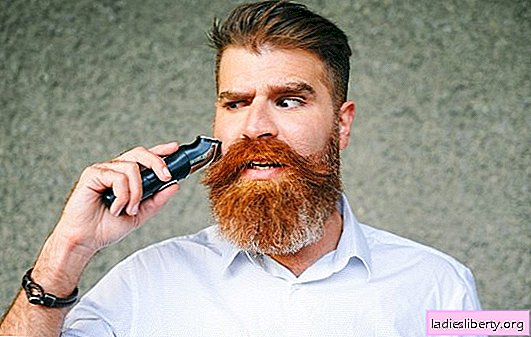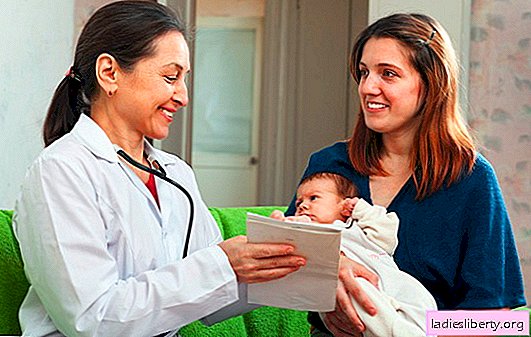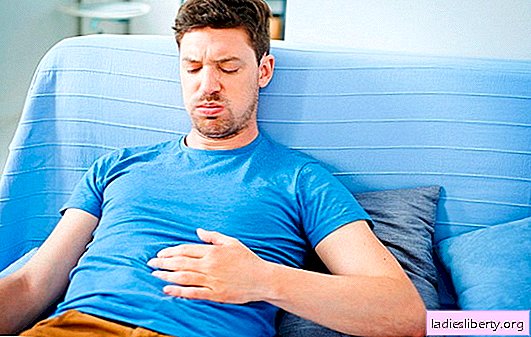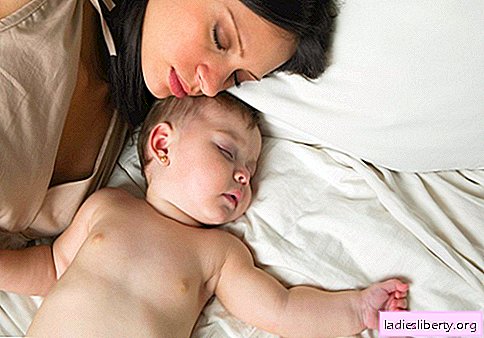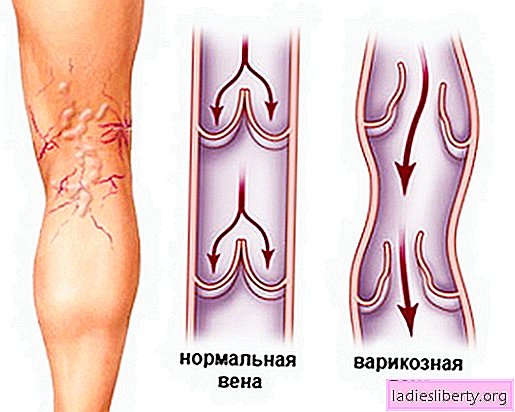
Varicose veins - how much is in this in the word ... The words of the classic are not about the disease, but those who suffer from it will sigh knowingly. Ugly blue vignettes on beautiful legs, sometimes unbearable burning, pain when walking and very tangible moral discomfort - such "pleasures" are more than enough to reflect on the causes, measures of prevention of the most unpleasant illness. Plus, perhaps the most important question is how to treat prominent veins in the legs. By the way, such questions of medicine as Avicenna and Hippocrates tried to solve this question.
Varicose veins in the legs
This ailment has the saying name "varix", which means "node" in Latin. Outwardly protruding vessels and truth resemble a cluster of nodules. They appear with irreversible lengthening of the veins with simultaneous expansion. The walls are becoming more and more thin, rather rough metamorphoses occur with them, leading to thinning. Parallel marked violations in the operation of the valves.
Unfortunately, there are visible tuberous veins in the legs of very many people, and more often the phenomenon occurs at a fairly young age of 30 to 40 years. Modern professions are mostly related to computer work, and doctors have long proved a directly proportional relationship between the time spent in a sitting position and the risk of developing the disease in question.
Varicose veins in the legs - causes
The main condition for the development of varicose veins in the legs - a violation of the normal course of blood through the vessels. Such an anomaly can be caused by reasons from a very impressive list, compiled by experts.
- Various tumors, for example, blood clots or tumors, can prevent the free flow of blood from the heart.
- Vein sore legs because of erect position. When a woman is in a standing position for a long time (hairdresser, seller), this negatively affects the condition of the blood vessels.
- Sedentary lifestyle, sedentary work increases the risk of developing the disease, because they greatly provoke circulatory disorders. In recent years, even appeared such a term as "computer varicose veins".
- Genetic predisposition, obtained from the older generation, is able to manifest itself in the very early infancy. Hereditary varicose veins can be prevented only by carefully following the recommendations for its prevention.
- Malfunctions in the hormonal and / or endocrine system are inherent in women. Violations are often the cause of blood stagnation. The periods requiring the most close attention include puberty, pregnancy, postpartum time. Climax is especially dangerous in this respect - suffering women come to doctors with the indicated problem three times more often than usual.
This trend is associated with a palpable lack of estrogen in the female body, hormones, which are dominated by the amount of the yellow body hormone. Many scientists believe that it relaxes the muscles, creating conditions for the expansion of the veins. If you let this risk factor out of sight, the development of the disease will lead to the fact that you may need surgery on the veins in the legs.
- Nervous work, constant stress in life causes an increase in pressure, which provokes a loss of vascular lumen tone.
- Similarly, alcohol, various toxins act on the nerve endings located in the venous walls and affecting their elasticity. This leads to the fact that the lumen with impaired tone begins to expand.
- Acceptance of hormonal drugs very often contributes to the appearance of unaesthetic patterns on the legs of girls and women.
- Increased venous pressure due to excessive obesity is a direct path to the risk group.
- Wearing fashionable and stylish stockings with tight elastic bands by fashionistas, despite all the warnings of doctors, continues to be considered one of the common culprits of the disease. After all, the gum crashed into the body really very significantly violate the blood circulation in a woman.
Moreover, the matter can reach the appearance of refluxes - pathological blood currents from veins located deep into the superficial vessels.
- The work of the venous valves is disturbed when a person constantly performs heavy, physical work, sneezes or coughs a lot. Because of this, the veins in the legs hurt, and the cause is an increase in abdominal pressure.
All these factors over time lead to disruption of the normal operation of the valves, which restrain the reverse current to normal, from bottom to top, against gravity. Because of it stagnation of blood begins in the legs, the veins become overstretched, the blood pressure increases more and more. Under the action of these moments, the vessels dilate, becoming thinner at the same time. And then there remains a very small step for the development of a rather serious disease.
Varicose veins in the legs - symptoms
The beginning varicose veins on the legs of the symptoms is fairly recognizable, therefore, with careful attention to herself, the woman is able to take emergency measures to prevent further progress of the disease.
1. Many people are familiar with the swelling of the legs to the end of the working day. The most elemental sign - suddenly become a close shoe. By the morning, after a good rest, this effect disappears, in order to remind ourselves again of unpleasant sensations.
2. Another very recognizable symptom is the feeling of a cannonball chained by shackles to a leg. It, along with the sensation of bursting in the calf-leg muscles, appears after quite a long work, sitting at a computer or writing desk. If you warm up, walk on foot and relax, then by the morning there will not be a trace of this effect, although then everything will return again.
3. After the first "swallows" a woman will get acquainted with hot sensations in the calves, when the veins are visible on the legs, and in the literal sense of the word. This symptom is felt precisely as subcutaneous fever.
4. The next warning will be more cramps appearing at night, which reduce the calf muscles in a rather sensitive pain.
5. The smallest vascular inclusions under the skin of the legs in the form of blue-red “stars” can be overlooked at first, but if along with them intradermal veins showing translucent dark blue become visible, it is no longer possible to draw attention to this symptom.
6. The final touch to the unsightly picture of the developing varicose veins are clearly distinguishable clusters of "grapes" of the expanding blood vessel.
If you persistently do not pay for all the listed symptoms and do not start the treatment of a vein in the legs, then eczema may appear at the site of the affected area. The neglected state of the disease is accompanied by a change in skin color (pigmentation), the appearance of induration (induration), and malnutrition of the epidermis.
Varicose veins in the legs - diagnosis
If a woman observes at least one of these symptoms, even if she just can easily feel a blood-saturated vein under her skin, then she needs to urgently get an examination by a phlebologist - this is the name of a specialist in similar diseases of blood vessels.
In order to save veins on the legs, treatment, as well as a visit to a doctor, should not be delayed in any case - the postulate that the success and speed of treatment depends on the timeliness of treatment and the speed of measures taken does not require proof. Moreover, it is possible to prevent the occurrence of very unpleasant complications.
At the first stage of diagnosis, the doctor conducts a visual inspection, palpation of the affected area. Then begins the stage of instrumental examination. Usually phlebologist gives direction to the ultrasound doplegography.
In cases where diagnosis is difficult, any problems have arisen in establishing the diagnosis, the doctor recommends also the X-ray contrast method, or the radionuclide method as an option. The principle of this study is based on the introduction of a certain kind of substances into the bloodstream, and tracking how they are distributed through the veins.
After the final establishment of varicose veins in the legs, treatment should begin immediately. At this point, the patient should act without undue initiative, strictly fulfilling the appointment of a phlebologist.
Varicose veins in the legs - treatment
The main question is: if the veins on the legs hurt - what to do? There are two well-known groups of treatment of varicose veins.
Surgical treatment of varicose veins in the legs
Phlebectomy. It consists of several consecutive stages - first remove the culprit of reflux using a fistula (sapheno-femoral or sapheno-pollithal). Then remove the main saphenous vein. At the next stage, also removed, but already expanded inflows of the affected vessel. And it ends with the removal of reverse current in perforating insolvent veins.
Sclerotherapy With this method, a "sticking" blood vessel drug is injected into the vein. Such a method of removing veins affected by varicose dilatation is carried out in some cases with the strictest control using ultrasound.
Radiofrequency coagulation. A small operation, also called ablation, is aimed at stopping reflux occurring in the saphenous vein (large and / or small). Local anesthesia is applied, the need for hospitalization of the patient in this case is absent. Cuts during radiofrequency coagulation are not performed, it is carried out under full ultrasound guidance.
Laser coagulation. A minimally invasive method of treatment with a laser beam, in which a sick woman does not need to go to the hospital to correct the problem. This surgical intervention does not require even cuts.
Conservative treatment of varicose veins
Ladies should remember that this group of methods is not opposed to the previous one. Conservative treatment is the main only in one case - the intervention of the surgeon is not desirable for good reasons. It is impossible to completely get rid of varicose veins by such methods, but it is possible to significantly stabilize the condition of the diseased and significantly reduce the rate of development of the disease, if you follow the doctor’s recommendations.
The methods of this group were directed towards preserving the working capacity of a sick woman, preventing recurrent diseases (relapses), and improving the conditions in which a patient is.
Conservative treatment methods are used for the following purposes:
- preparation of patients who have very strongly launched the course of the disease, for surgical intervention;
- if it is impossible to appoint a surgery for medical reasons.
Compression therapy
With the help of squeezing, they tried to cure the sore in ancient times. This is proven by archaeologists who have repeatedly found during excavations the remains of elastic bandages, for example, from the skin of dogs. They rooted the leg caviar on long hikes, Roman legionnaires, to warn of the swelling of the calves, their soreness.
The compression method is key to conservative treatment. Its effects are:
- due to the tightening, the diameter of the veins close to the surface becomes much smaller;
- elimination of reverse current (reflux) or at least its decrease several times;
- an increase in the rate of movement of blood through the deeper veins;
- decrease in the volume of accumulated blood in the lower parts of the legs;
- improving the quality of lymphatic drainage.
Compression knitwear or elastic bandages, which are common to most people, are most commonly used for this method of treatment. It is important to properly apply a compression tape, if there are protruding veins in the legs, and for knitwear - to correctly and accurately select the desired size.
Drug method
With the help of medicines prescribed by a phlebologist, the patient increases the elasticity of the venous walls, decreases the capillary permeability. Another important result is the improved quality of lymphatic drainage. With the help of drugs, it is possible to arrest possible inflammation, improve microcirculation.
Regardless of the methods of treatment prescribed by the doctor, a woman should not forget about the need to lead an active, healthy lifestyle.
Varicose veins in the legs - when surgery is indicated.
Surgical treatment of varicose veins is aimed at improving the direct blood flow through the deep veins and eliminating the reverse. To prevent pathological changes in the surrounding tissues, the operation is required as early as possible. Among the indications for it are called:
- significant expansion of the veins under the skin;
- signs of the appearance of trophic ulcers, which are not amenable to conventional treatment;
- symptoms of serious blood flow disorders (swelling, heaviness, even if there are no visual signs of varicose veins);
- progressive acute thrombophlebitis.
Varicose veins in the legs - treatment of folk remedies
Some patients prefer to go to the hospital for treatment at home with veins in their legs. Usually, the basis of "magic" recipes from grandmothers and cups are medicinal herbs and improvised products.
1. Mashed potatoes. You can grate peeled potatoes. The resulting mass rub the sore spot on the legs. After the pain subsides (after about 3-4 hours), rinse the pulp with warm water.
2. Dandelion ointment. Boil washed dandelion roots, rub them with pork fat to a creamy mass. Put in the fridge and apply to sore veins.
3. Infusion Kalanchoe. Washed leaves should be folded up to half a jar (1 liter), topped up with alcohol 70%, leave for 2 weeks in a dark place, shaking daily. Then, before going to bed, lubricate the feet and legs with this infusion. In case of a difficult condition, it will take about 4 months to significantly improve.
But no matter how homely the veins on the legs seem to be remarkable, it should not be used without consulting with your doctor in order to avoid deterioration.
Varicose veins in the legs - prevention
Prevention of varicose veins in the legs is a whole system of simple but effective interventions.
1. Compliance with the optimal alternation of work and rest.
2. The exception in the sitting position, impeding the normal circulation - crossed legs, "leg to leg", etc.
3. Quite a frequent change of position with a forced long-term sitting.
4. The lack of clothes in the wardrobe, underwear that squeezes the body in the waist, hips, groin area, etc.
5. Wearing your favorite as high as the studs and narrow noses on the shoes only during the holidays, and not very long.
6. Frequent walking on foot in comfortable shoes, sports slippers, sneakers, etc.
7. Compliance with a diet based on proper, healthy nutrition, so you can avoid constipation, which increase blood circulation pressure in the pelvic area.
The same simple but effective measures for the prevention of varicose veins on the legs include:
- swimming, cycling;
- placement during the rest of the legs above the level of the heart by about 16-21 cm;
- transition to a healthy lifestyle without smoking and other bad habits;
- control overweight;
- daily exercise;
- cold and hot shower;
- reception per day to 1.5-2 liters of water, including third courses.
Also, for the purpose of prophylaxis, it is recommended to avoid prolonged stay in bright sunlight, visits to high-temperature saunas, and taking too hot baths.

